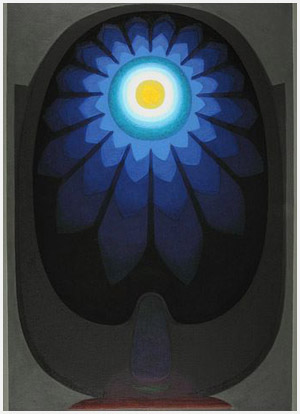EXHIBITIONS
- 1951 Participated in Salon de Mai, Paris
- 1952 Exhb., Freemasons Hall, New Delhi.
- 1953, 54, 56 Exhb., AIFACS, New Delhi.
- 1953, 64 National exhb., Lalit Kala Akademi, New
Delhi.
- 1959, 61 Mainichi Beinnale, Tokyo.
- 1960 Contemporary Art from India, Museum Folkwang,
Essen.
- 1961 Sao Paulo Biennale, Brazil.
- 1962 Venice Beinnale, Italy.
- 1965 Ten Contemporary Indian Painters, MIT, Cambridge.
- 1967 Pittsburgh International Show, USA.
- 1968, 71, 75, 78, 82 1st, 2nd, 3rd, 4th, 5th International
Triennale India, New Delhi.
- 1971 Contemporary Indian Paiting exhb., Washington
DC, Pasadena and Toronto.
- 1971 Exhb., Gallery Chanakya, New Delhi.
- 1972 Contemporary Indian Art, USSR and Greece.
- 1972 25 Years of Indian Art, New Delhi, Bombay and
Madras.
- 1973 Beinnale of Sydney, Australia.
- 1973 Contemporary Indian Painting, Washington DC,
Los Angeles, USA and Toronto. 1973, 74 Solo exhb.,
Gallery Chemould, Bombay.
- 1973, 74 Indian Painting Today, Belgium, Yugoslavia
and Bulgaria.
- 1974 Solo exh
COLLECTION
- National Gallery of Modern Art, New Delhi.
- Lalit Kala Akademi, New Delhi.
- Punjab Museum, Chandigarh.
- Museum of Art, Bhopal.
- Gandhi Darshan, Rajghat, New Delhi.
- University of Delhi, New Delhi.
- Jammu and Kashmir Academy of Art, Srinagar.
- Museum of Indian Art, Berlin.
- National Gallery of Czechoslovakia, Prague.
- Museum of Modern Art, New York.
- Delhi Art Gallery, New Delhi.
AWARDS
- 1958, 64 National Award for painting, Lalit Kala
Akademi, New Delhi.
- 1959-60 Received Fulbright Scholarship, USA.
STYLE
Birens painting has grown and is growing. Sometimes
it is labeled Tantric but I do not think it is tantric
any more than what is painted today can be traditional.
I think it is clear that each phase emerges out of the
one before and is more profound. Though the struggle
of the artist seems immense, it seems he is also more
able to let some inner source beyond rationality dictate
his direction. His art moves through him towards a more
universal expression, which is elegiac and heroic. The
deep reverberations of this music will be with us when
all is still. Jaya Appasamy
TEACHING EXPERIENCE
1952-64 Lecturer, College of Art and Delhi Polytechnic,
New Delhi. 1968 Visiting Faculty Member, School of Planning
and Architecture, New Delhi.

back |



